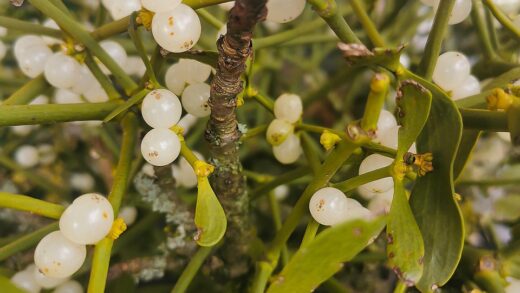While Dutch irises are relatively robust and easy to grow, they are not immune to a range of diseases and pests that can affect their health and diminish their aesthetic appeal. Proactive identification and management of these issues are key components of successful cultivation. Most problems can be prevented or controlled through good cultural practices, such as ensuring proper planting depth, providing excellent soil drainage, and maintaining good garden hygiene. By being vigilant and learning to recognize the early signs of trouble, gardeners can protect their irises and ensure a beautiful, healthy display year after year.
The most significant threat to the health of Dutch iris bulbs is fungal disease, which is almost always linked to excessive moisture and poor drainage. Bulb rot, caused by various soil-borne fungi, is the most common and destructive problem. The initial symptoms may not be visible, as the decay begins below the soil surface, but it often leads to stunted growth, yellowing foliage, and a complete failure to flower. When an affected bulb is dug up, it will feel soft and mushy and may have a foul odor, confirming that rot has set in and the bulb is beyond saving.
Another prevalent fungal issue is iris leaf spot, which is caused by the fungus Didymellina macrospora. This disease manifests as small, yellowish spots on the leaves that gradually enlarge and develop a reddish-brown border, eventually causing the entire leaf to die back prematurely. While it is not typically fatal to the bulb itself, a severe infection can weaken the plant by reducing its photosynthetic capacity, which can impact the following year’s blooms. The fungus overwinters on infected plant debris, making autumn cleanup a critical preventative measure.
Botrytis, or gray mold, can also affect Dutch irises, particularly during cool, damp weather conditions. This fungus can cause spots on the flowers and, in severe cases, can lead to the rotting of the stem and crown of the plant. You may notice a fuzzy gray mold developing on the affected plant tissues. Good air circulation around the plants is one of the most effective ways to prevent botrytis, so proper spacing at planting time is crucial. These fungal diseases underscore the importance of managing moisture both in the soil and on the plant’s surface.
Bacterial infections and prevention
Alongside fungal diseases, Dutch irises can also be susceptible to bacterial infections, with bacterial soft rot being a primary concern. This disease is caused by the bacterium Pectobacterium carotovorum and results in a smelly, viscous rot of the bulb. The infection often gains entry through wounds or damage to the bulb, which can occur during planting, division, or from the feeding activities of certain pests. The symptoms are very similar to fungal rot, with the bulb becoming soft and putrid, and there is no cure once the infection has taken hold.
More articles on this topic
Prevention is the only effective strategy for managing bacterial soft rot. This begins with the careful handling of the bulbs at all times to avoid creating any nicks, cuts, or bruises that could serve as an entry point for the bacteria. When dividing iris clumps, it is a good practice to use a clean and sanitized knife or tool to make any necessary cuts. Some gardeners even choose to dust the cut surfaces of the bulbs with sulfur powder, which has antibacterial properties, before allowing them to cure for a day or two prior to replanting.
Good garden hygiene plays a vital role in preventing the spread of both bacterial and fungal pathogens. It is essential to remove and destroy any plants that show signs of rot immediately to prevent the bacteria from spreading through the soil to neighboring healthy bulbs. Do not place infected plant material in your compost pile, as the pathogens can survive and be reintroduced into the garden later. Similarly, cleaning up and disposing of all dead iris foliage in the autumn removes the overwintering sites for many diseases.
Ensuring that the soil conditions are not overly favorable to pathogens is another key preventative measure. This goes back to the importance of excellent drainage and avoiding overwatering. Bacteria, much like fungi, thrive in anaerobic, waterlogged conditions. By providing a well-aerated soil environment and allowing the bulbs to have their necessary dry dormancy period in the summer, you create conditions that are inhospitable to these destructive microorganisms, significantly reducing the risk of infection.
Identifying common pests
Several common garden pests can cause damage to Dutch irises, affecting their vigor and appearance. Aphids are one of the most frequent culprits, often found in colonies on the new, tender growth and flower buds. These small, sap-sucking insects feed on the plant’s juices, which can lead to distorted growth, and they also excrete a sticky substance called honeydew, which can promote the growth of sooty mold. More significantly, aphids are known vectors for spreading viral diseases from one plant to another.
More articles on this topic
Another pest that can be problematic is the iris borer (Macronoctua onusta), although it is more commonly associated with bearded irises, it can occasionally affect other types. The adult moth lays its eggs on old iris foliage in the autumn. In the spring, the larvae hatch and tunnel their way down into the leaves and eventually into the bulb itself. Their feeding activity hollows out the bulb and creates entry points for bacterial and fungal rot, often leading to the complete destruction of the plant. Telltale signs include notched or water-soaked looking leaves in the spring.
Thrips are tiny, slender insects that can also infest Dutch irises, typically feeding on the flowers. They use their rasping mouthparts to scrape the surface of the petals and suck the plant’s juices, resulting in silvery streaks, discoloration, and distorted blooms. A severe infestation can ruin the aesthetic quality of the flowers and can cause the buds to fail to open properly. Their small size makes them difficult to see, but their damage is often quite noticeable on the flower petals.
Slugs and snails can also be a nuisance, particularly in damp conditions and on young, emerging foliage. They chew ragged holes in the leaves and can sometimes damage the flowers as well, leaving behind their characteristic slime trails. While they are not usually a threat to the survival of the bulb, they can make the plants look unsightly. These common pests require vigilance from the gardener to spot their presence early before a significant amount of damage can occur.
Integrated pest management strategies
An integrated pest management (IPM) approach is the most sustainable and environmentally friendly way to control pests on Dutch irises. IPM focuses on prevention and uses a combination of tactics, resorting to chemical pesticides only as a last option. For aphids, the first line of defense is often a strong jet of water from a hose, which can be very effective at dislodging them from the plants. Encouraging natural predators, such as ladybugs, lacewings, and hoverflies, by planting a diverse range of flowering plants in your garden can also provide excellent long-term biological control.
To manage the iris borer, the most crucial IPM strategy is meticulous garden sanitation in the autumn. Since the moth’s eggs overwinter on old leaves and garden debris, a thorough cleanup of all dead iris foliage after the first hard frost is essential. Removing and destroying this material will eliminate the vast majority of the next generation of borers. In the spring, if you notice the characteristic signs of borer activity on the leaves, you can sometimes crush the small larva within the leaf before it has a chance to travel down to the bulb.
Controlling thrips can be challenging due to their small size and tendency to hide within the flower buds. Reflective mulches, such as aluminum foil placed on the soil, can sometimes deter them. For more severe infestations, insecticidal soaps or neem oil sprays can be effective, but they must be applied thoroughly and repeatedly, ensuring contact with the pests. As with any spray, it is best to apply it in the early morning or evening to avoid harming beneficial pollinators that may be active during the day.
For slugs and snails, there are numerous IPM strategies available. Hand-picking them off the plants at night or on damp mornings can be effective in small gardens. Traps, such as shallow dishes of beer sunk into the soil, are a classic method. Barriers made of crushed eggshells, diatomaceous earth, or copper tape placed around the iris bed can also deter them. By employing these varied and targeted control methods, you can manage pest populations effectively while minimizing the impact on the broader garden ecosystem.
Preventing problems through cultural practices
Ultimately, the most powerful tool a gardener has for combating diseases and pests is the implementation of sound cultural practices. A healthy, vigorous plant is inherently more resilient and better able to withstand pressure from both pathogens and pests. This foundation of health begins with selecting a planting site that provides the iris with its ideal growing conditions: full sun and, most importantly, exceptionally well-drained soil. This single factor will prevent the vast majority of fungal and bacterial rot issues.
Proper planting techniques also play a significant preventative role. Spacing the bulbs correctly, typically 3 to 4 inches apart, ensures that there is good air circulation around the mature plants. This airflow helps the foliage to dry quickly after rain or morning dew, creating an environment that is less favorable for the development of fungal diseases like leaf spot and botrytis. Planting at the correct depth also contributes to the overall stability and health of the plant.
Regular garden sanitation is a cornerstone of disease and pest prevention. This includes promptly removing any weeds that may compete for resources or harbor pests. It also means cleaning up and disposing of all plant debris at the end of the season. Old leaves and flower stalks can provide a safe haven for insects to lay their eggs and for fungal spores to overwinter. By maintaining a clean and tidy garden bed, you are actively disrupting the life cycles of many potential problems.
Finally, adopting a proper watering and fertilization regime builds plant resilience. Watering at the base of the plant in the morning minimizes foliage moisture. Avoiding high-nitrogen fertilizers prevents the development of soft, succulent growth that is overly attractive to pests like aphids. By focusing on creating a healthy growing environment and following these fundamental cultural practices, you can proactively manage the health of your Dutch irises, significantly reducing the need for reactive treatments later on.
📷: Oleg Yunakov via Wikipedia CC BY-SA 4.0


















